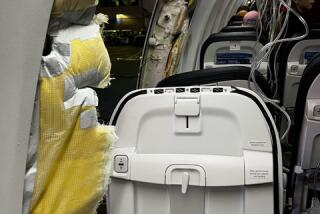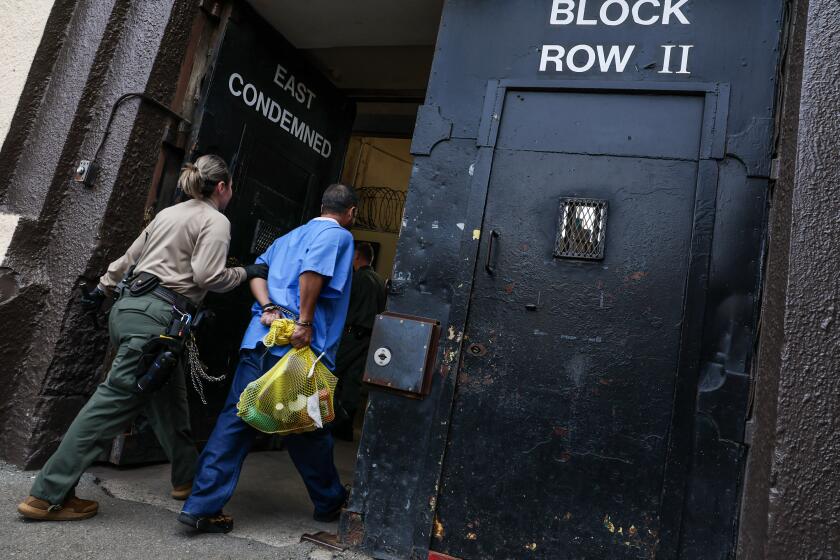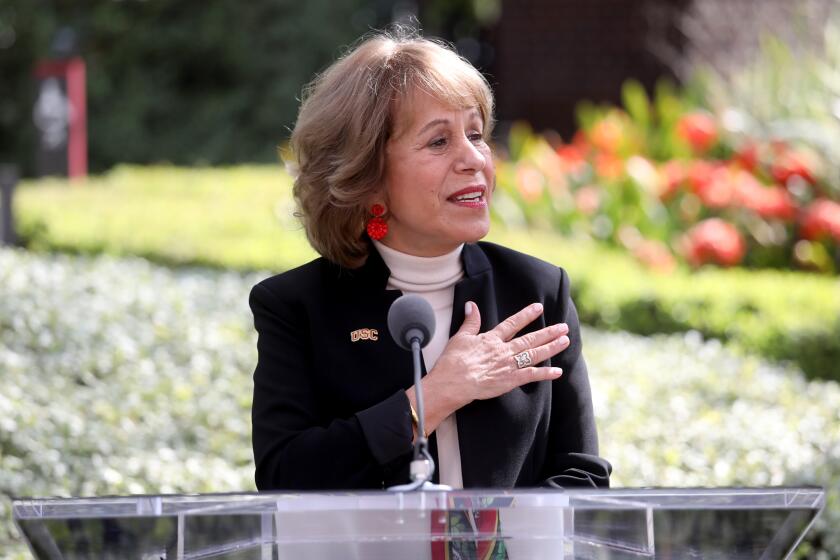Seeking Solid Ground
Earl Vipond watched last week as the Beechcraft single-engine aircraft took off and dipped at a dangerous angle, ultimately exploding on impact with a nearby unoccupied home.
Standing near the runway at Fullerton Municipal Airport, Vipond took note because the plane was identical to his own. He wondered what had gone wrong: Was it the pilot’s fault? Or was it a mechanical problem?
This week a possible answer surfaced. The pilot, William Lofton, may have inadvertently flipped a toggle switch that controls the mixture of fuel and air into the aircraft engine, possibly causing a loss of power, a federal investigator said Tuesday.
“The fuel-air mixture is critical to the function of the engine,” said Bob Crispin, an air safety investigator for the National Transportation Safety Board in Los Angeles.
“Right now, it is just a theory,” Crispin said, adding that investigators are still studying the April 11 crash. But he said the boost switch possibility “looks promising.” A final report is expected in six to nine months.
For pilots at the tightknit Fullerton airport, the cause of the crash that killed 50-year-old Lofton and destroyed a home has been the focus of speculation ever since the six-seat aircraft went down.
Local aviators--who may well be flying the same chunk of airspace and the same model plane--want the answers now.
“Everyone is trying to figure out why this pilot ended up like he did,” said Bill Griggs Sr., whose 30 years running a flight school at the airport have made him the patriarch of the pilot fraternity.
Pilots, many of whom regularly check NTSB synopses of plane accidents around the nation, say every incident or accident is a reminder of the dangers inherent to flying. Every accident is an opportunity to learn a lesson or be reminded of an old one.
In their preliminary report, investigators discounted one theory that has made the rounds among Fullerton airport regulars--that an open door reported by Lofton may have contributed to the crash.
Lofton told an air traffic controller that a door was open and requested clearance to return for a landing shortly after taking off just after noon. But NTSB officials said they believe there was no connection between the door and the crash, citing Lofton’s “no emergency” reply to a controller’s question.
Still, local pilots say they continue to believe the open door--which they say would have been very noisy and distracting--may have played a role.
“An accident usually happens when a chain of events go wrong,” said John Edwards, who has flown for more than 20 years. “If any one thing went wrong, you’d probably be able to handle it.”
And pilots point out that even total loss of power to an aircraft does not necessarily mean disaster. With enough altitude, they say, experienced pilots should be able to land even after engine failure.
The preliminary finding of a problem with the toggle switch was in line with witnesses reporting a trail of black smoke after the plane took off. The smoke was a telltale sign that the toggle switch, which controls the plane’s boost fuel pump, was positioned too high, allowing an excessively rich mixture of fuel, according to the preliminary NTSB report.
“The engine manufacturer reported that if the fuel boost pump is turned to the ‘high’ position while the engine is at full throttle, there will be no appreciable loss of power,” the report said. “This will cause, however, dark smoke to become visible from the exhaust because this creates a rich air-fuel mixture.”
But as the throttle is reduced, the aircraft will lose power and exhaust smoke appears lighter, the report stated.
Witnesses near the crash site reported seeing grayish or light smoke. And one witness said he heard the sound of the engine stopping just before the crash.
Lofton, who lived in Sherman Oaks, was a popular obstetrician at Kaiser Permanente Hospital in Panorama City and an experienced pilot who owned the plane for nearly 15 years. Moments after he told an air traffic controller that there was no emergency, the controller heard the same voice again: “Emergency, I got . . . “ Then communications ceased.
The latest crash is one of at least 31 incidents or accidents at or near the Fullerton airport in the past 15 years. In that time, 11 pilots and passengers have been killed and 15 injured. One woman on the ground died in her bed in 1995 after a pilot of a small plane became disoriented in the fog and plummeted into her Fullerton townhome.
Airport manager Rod Propst said the problems are few and far between at an airport that has seen more than a million takeoffs and landings in those years.
Still, for local pilots, the latest crash was a reminder of why they keep their skills up to date and respect the dangers of flight.
“There’s an old saying we all know,” Edwards said: “Every so often a good pilot will have a bad day.”
More to Read
Start your day right
Sign up for Essential California for news, features and recommendations from the L.A. Times and beyond in your inbox six days a week.
You may occasionally receive promotional content from the Los Angeles Times.








